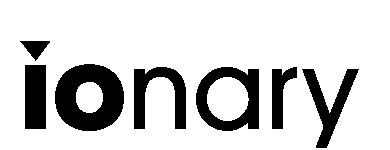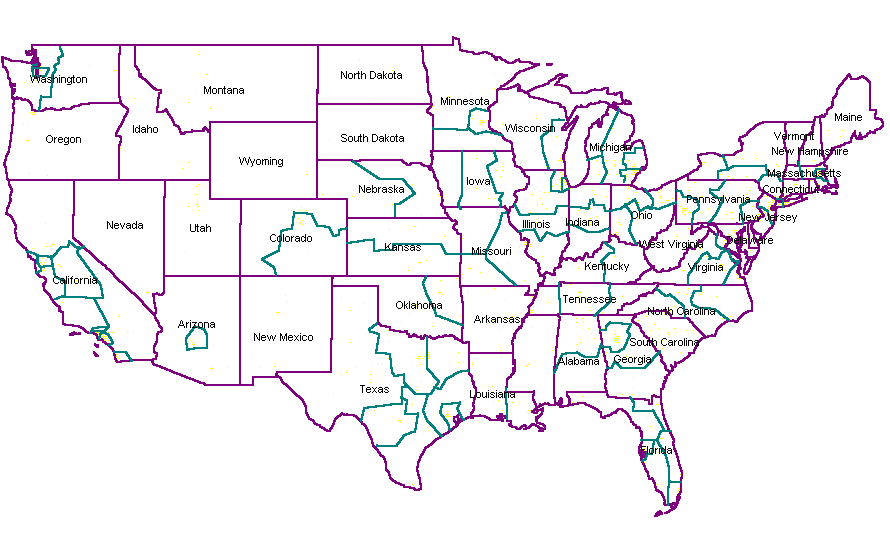

Fred Goldstein
ionary
11/99 (rev. 11/02)
Telephone numbers in the United
States, Canada and quite a few Caribbean countries all conform to the
North American Numbering Plan, a scheme that has been in place, with
some updates along the way, since 1947. It is one of those
constants of American life, embedded in everything from cell phones
to utility bills to cash registers. Everybody knows how it
works: A 3-digit area code, a 3-digit prefix code, and four
more digits. So why change it?
The reason is simple: It's running out of room. The North American Numbering Plan (NANP) has a certain amount of space for geographic area codes. Since the mid-1990s, the rate at which new area codes are created has been far, far higher than the NANP's creators anticipated. Oddly enough, the rate from 1947 to 1990 was much slower; the NANP was originally estimated to have room to grow until 1995; current forecasts are that it is likely to exhaust some time between 2005 and 2015. Note that while the FCC maintains jurisdiction over it, the NANP is administered by Neustar, which maintains an excellent web site.
An industry group sponsored by the Alliance for Telecommunications Industry Solutions (ATIS) has been working on "solutions". These are mostly ways of extending the plan by adding digits somewhere in the middle. Most of these plans assume that everyone will be dialing ten digits for local calls before the plan is extended. This is already the case in areas that have overlay area codes, but 7-digit dialing persists in most of the country.
The "holes" that the NANP leaves for expansion are quite limited. Foremost is the second digit of the area code. No area code today can have a 9 as its second digit. Another restriction is that prefix codes cannot begin with 1 or 0. Of course an initial 1 is needed in some places as a toll barrier digit, and in general to prefix area codes, and 0 is used for operator-assisted calling. So until 10-digit local dialing is in place, the fourth digit of a 10-digit number can't be 1 or 0. That's why we can't just jump to 8-digit dialing nationally: There is no unambiguous way to have 8-digit and 7-digit dialing coexist.
The current 3-3-4 plan is hardly ideal. It owes its design to the high technology of the 1930s, the crossbar switch. Crossbar central office switches were incredibly advanced for their day; their control circuits, called markers, were almost computers, yet were built out of relays. AT&T, aka The Bell System, ran the telephone network pretty much as they saw fit in those days, and their manufacturing arm, Western Electric, was producing a family of crossbar switches. A key feature was their ability to translate dialed telephone numbers based on 3-digit groups, which were in effect indices into an 800-entry table which could be programmed with jumpers or even, in one rather noisy variation, metal punch cards. The user dialed, say, 779, and the marker figured out where to send the call, along with the remaining four digits.
Direct Distance Dialing was thus based on a simple rule for parsing these 3-digit number groups: If the second digit of the dialed phone number was a 0 or 1, then it was an area code, and the telephone number was deterministically 10 digits long. Two stages of 3-digit translation might follow. Otherwise, the number was seven digits long. Of course this meant that uniform 7-digit local numbering had to be phased in. In many areas, shorter dialing patterns (often just the last four or five digits) persisted until the 1980s, but there was always a full 7-digit number for long-distance access.
The area codes themselves were assigned based on at least three guidelines. First, the more populous areas got area codes with shorter dial pulls: (With rotary dial phones, a 0 was ten pulls.) So the biggest city, New York, got 212 (five pulls) while Chicago and Los Angeles got 312 and 213 (six pulls). Rural areas got the ones with more pulls. Second, nearby areas got dissimilar codes. (Don't ask me why this was considered a good idea.) Third, states with one area code got a 0 in the middle of that code, while states with multiple area codes got 1s in the middle. That feature did not even last until the time when most subscribers could even dial their own long distance calls.
Proposals to extend the NANP don't address the weaknesses in the existing plan. Crossbars, and all electomechanical switches, are now history. Rotary dial phones are antiques. Area codes have split and split again, so that many telephone numbers have been changed twice within the past few years, and may have to do so yet again. In some cities that retain 7-digit dialing by way of smaller area codes (notably Los Angeles), the area codes are so small that ten-digit local calling is often required for many calls anyway. There are too many area codes for people to recognize where many are, and high-cost international calls to the Caribbean countries (which were once all in 809) are easily confused with low-cost domestic calls. The toll free space (800 plus 888, 877..822) is also filling in rapidly. There is no place for nongeographic regular-rate (toll from anywhere) numbers, caller-paid cellular, and other services that are popular in other countries.
The plan currently favored by ATIS uses 12-digit dialing for all domestic calls. Existing numbers are converted by adding two adjacent "0"s, one at the end of the NPA and one in front of the NXX. Thus for example 617-936-1234 would become 6170-0936-1234. This may be convenient for carriers but does nothing to improve the usability of the network; indeed it seriously impairs the user interface, especially compared to 7-digit dialing.
Thus I have proposed an alternative plan. Its goal is to arrive at an "idealized" new NANP. Its end state includes 8-digit local dialing (with 7-digit dialing retained for the smaller Caribbean countries), easy identification of US, Canada, and Caribbean codes, ample space for toll free expansion, and room for new services that can easily be identified by their leading digits. It's not based on expanding the old NANP, it's based on replacing it. All-new area codes are assigned. Nonlocal dialing codes, including area codes, will always begin with "1", so area codes are denoted by numbers 1xxx. For example, new domestic area codes are in the range 1200 through 1389. Existing 7-digit local numbers are converted by adding one digit to the prefix.
Because any new plan must be phased in with plenty of "permissive" dialing time, when both new and old numbers can be dialed, transition to the new plan takes a few steps. Least pleasant is the fact that for a brief time, all local calls will have to be dialed 12 digits. This is not good, but it's not unique to this plan; most of the ATIS plans require 11 or 12 digit local dialing anyway. Only those plans, in contrast, stay there.
This plan envisions moving to 8-digit local dialing, which allows several existing area codes at a time to be consolidated. It isn't terribly important or even necessarily useful to combine or recombine area codes that have little local calling between each other. But many metropolitan areas have been carved up into tiny slivers, with much local inter-area calling. With 8-digit numbers, most of the top metropolitan areas can be brought back to one or two area codes, or at least not many more than they had in 1991.
I've produced two different "split maps". One is an aggressive reconsolidation, which I did in late 1999. It combines area codes freely, though never more than six at a time. (However, since then, some area codes have been overlaid or split again, so some areas are now too large to reconsolidate as shown in the map.) It's a nice colorful MapInfo-produced map. Trouble is, MapInfo "splits" are difficult. The second map is a less-aggressive reconsolidation. It was produced in mid-2001 and leaves more area codes alone. This reduces the likelihood of future splits becoming necessary, but still leaves some vacant code space in the plan (which has room for 180 area codes within the United States before moving into its "reserved for expansion" space) for future splits, should they be necessary.

Less-aggressive reconsolidation of area codes creates this map of 8-digit dialing areas.
California is down to eleven area codes. Los Angeles still needs "downtown" (current 213, 323, 310), "valley" (818, 626), and "south/Orange" codes, while the "inland" 909 merges back with "desert" 760. San Diego's two codes are rejoined. The Bay Area is left with West Bay (415/650), East Bay (510/925) and South Bay (old 408).
Washington is reduced to three, for Seattle (current 206/425), other western, and eastern areas. Arizonais left with two, Phoenix-metro and elsewhere. Colorado is left with its 1991 two-code configuration. Texas seems to need at least seven areas. Illinois is left with five, though a couple of rural ones could also be consolidated; likewise, Indianais left with three. Michigan has so many codes now that it ends up needing five; Detroit is left split along the 8-Mile Road. Ohio has four quadrants.
Georgia needs only three, with one for Metro Atlanta, one that merges the discontiguous 706 with the Macon area, and one for the south. Florida needs six; Tampa Bay is un-split, while the southeast has a boundary between Broward and Palm Beach. North Carolina fits back into three, while Virginia can remain with four (Metro DC, Richmond-central, Tidewater, and the west).
Pennsylvania
goes back to four areas, though the proliferation of
Philadelphia-area numbers might require a fifth. New Jersey
returns to its historic two-code status; Maryland should
only need one. New York's map is close to its historic
one too, with one for the five boroughs, one for Long Island to the
east, one for the old 914, and three upstate (with old 518 and 315
merged). Massachusettsneeds at least two, for Metro Boston
(617/718) and elsewhere, but the old 413 can be left alone too if
desired.
Quite frankly, no. Most of the area codes are wasted. There is no shortage of phone numbers, just of prefix codes. Numbers are assigned wastefully. Every local carrier in every rate center typically requires a separate code. Pooling of numbers by the thousands has begun to be implemented, so that a prefix code can be shared among up to ten carriers. That will slow down the growth. But there's no reason for prefix codes to be assigned to carriers at all; with number portability now in place, numbers could be issued to all carriers' customers by a neutral third party. And rate centers could be consolidated.
But that
hasn't been done, so numbers are exhausting. Thus the plan.
Plenty
of good information about telephone numbers and area code splits is
on Linc Madison's (LincMad)
site.
James
Bellaire has a somewhat different plan,
an evolution of the
existing plan to 8-digit dialing, not a replacement. It goes
straight to 8-digit local dialing by doing away with "0+"
dialing and turning existing numbers to 8 digits by prepending a 0.
The motherlode of telecom technical information
is the Telecom
Digest site.